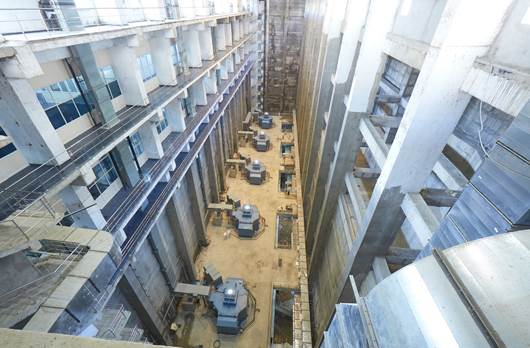ABB has deployed five of its highest-capacity motors – each capable of pumping 23,000 liters per second – as part of the Mahatma Gandhi Kalwakurthy Lift Irrigation Scheme.
Mahatma Gandhi Kalwakurthy Lift Irrigation Scheme (MGKLIS), a 12-year-long project, was recently completed. This was made possible only through considerable feats of civil engineering: industrial-strength water pumping technology and electric-power management systems that ABB, with decades of irrigation experience in India, provided.
ABB technology
Pumping water at thousands of liters per second to reach a reservoir 298m above river level – the height of the Eiffel Tower – requires huge motors and high-voltage power systems. The MGKLIS project called for lifting the water in three separate stages, with ABB handling the critical middle stage – Lift II, with an 86m rise.
Powering these motors up to pumping speed from a dead start requires considerable amounts of electricity and potentially puts great strain on the mechanical systems and the local utility grid. ABB’s soft starter solution involves a 6-mw load commutated inverter (LCI) that minimizes the electrical surge, and variable frequency drives (VFDs) in the motors that enable them to start smoothly before accelerating up to 333 rpm.
ABB partnered with Andritz Pumps to provide this advanced pumping solution. In addition, ABB also offered substation equipment, transformers, and a digitally enabled supervisory control and data acquisition (SCADA) monitoring system that ensures a steady and reliable drawing of power from the grid and smooth pumping of water into the reservoir.
Drought
Years of severe drought has created a water crisis in the Mahbubnagar region in Telangana, where half the population of 35 million depends on agriculture to earn a living. The water table had virtually depleted and the monsoon rains now only last three to four months a year. The only option for providing adequate water for farming and drinking is to pump it from the Krishna River to a reservoir nearly 300m above. From there, through a gravity-driven “lift irrigation” system, the water can be channeled through nearly a hundred kilometers of canals to the parched farms and more than 300 villages that were at risk of turning to desert, a release from ABB noted.

